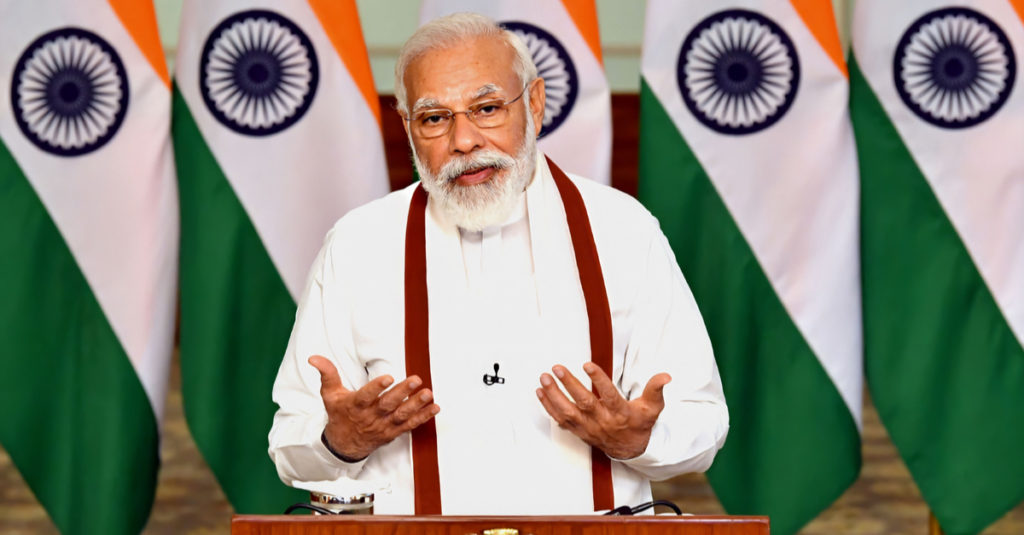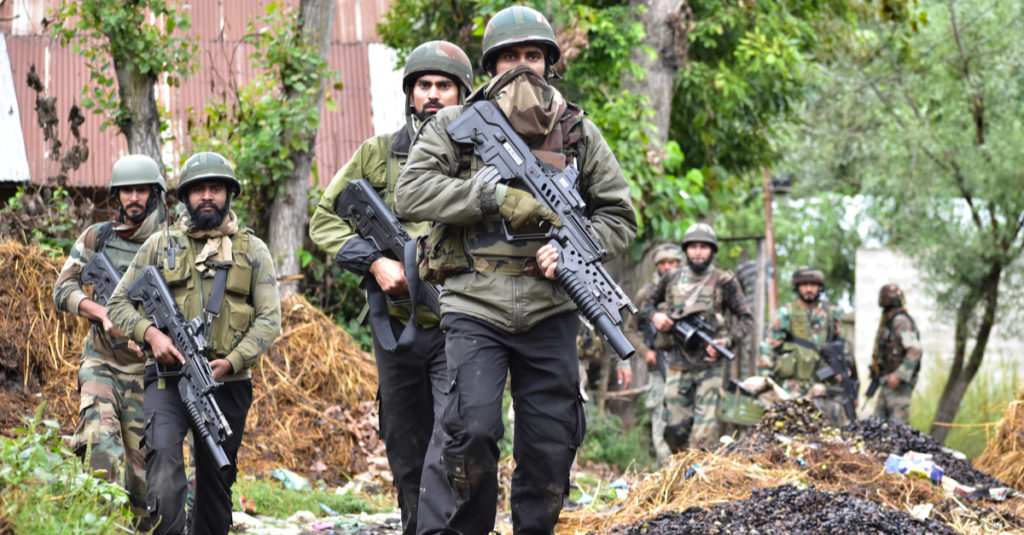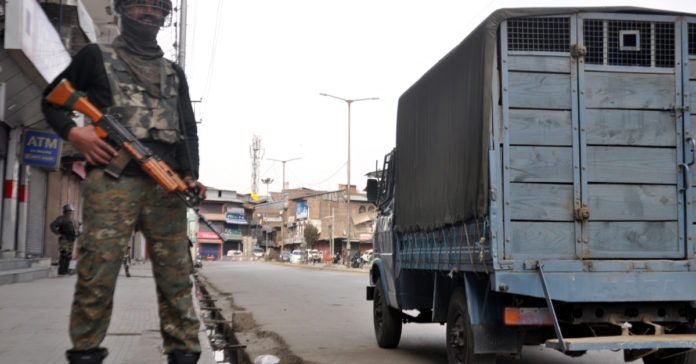Sajad Rasheed, an author and writer from Indian-occupied Kashmir, explains how in the last two years India has made all the necessary preparations for a complete takeover of Kashmir.
On August 5th 2019, India repealed all the local laws and extended its own laws to Indian-occupied Kashmir and stripped its semi-autonomous status.
The reason behind this move was to reorganise Kashmir along the lines of the Hindu nationalist RSS agenda which is precisely the reason why India named it the “Jammu and Kashmir Reorganisation Act.”
But this begs the question: How would the reorganisation take place and what are its consequences?
Before August 2019, Kashmir had its own national flag and legislative assembly and its local laws prohibited any non-native to purchase land or apply for government jobs in Kashmir.
But since August 2019, the BJP Party has used every trick in the book to further its Hindutva agenda (a racist ideology with political expediency) and bring momentous changes with far-reaching implications for Kashmiri Muslims. This includes divisive communal rhetoric and legal manipulation.
Momentous changes
Subscribe to our newsletter and stay updated on the latest news and updates from around the Muslim world!
Firstly, Kashmir is under the Indian President’s rule because New Delhi dissolved Kashmir’s legislative assembly, which means a governor (parachuted from outside Kashmir) has been appointed by the Indian state to rule the Muslim subjects of the state. This effectively means the Indian Parliament can make laws on behalf of Kashmiris without their consent.
Secondly, after imposing the President’s rule in Kashmir, India embarked on an arresting spree and thousands of political activists were jailed under the Public Safety Act. Amnesty International has called it a draconian act, which is essentially an executive order in which people are locked up in jails for two years and subsequently the time period is extended if the Indian authorities feel the need.
Thirdly, India banned the largest socio-cultural organisation in Kashmir – the Jamaat e Islami Kashmir – on the fabricated pretext that it supported armed rebellion and most of its cadres are languishing in Indian jails. India also banned the Jammu and Kashmir Liberation Front, a non-violent resistance group, and arrested its leaders. Yasin Malik, the group’s leader, is still in India’s notorious Tihar Jail, India’s version of Guantanamo Bay.
Fourthly, and the most important aspect of the reorganisation which is underway on a massive scale, is the tampering with legal instruments. The Domicile Law, which determines the citizenship of the state, has been changed. Earlier, only natives of Kashmir were its citizens but after the law was changed, India has given domicile certificates to more than three million Indian citizens. This means an influx of millions of non-Muslims in the Muslim dominated region. Also, they can now buy local land and be an equal party to local government jobs which otherwise were reserved for native Kashmiris.

In the last two years, the Indian Parliament has changed land laws in favour of its armed forces, essentially putting all of Kashmir up for sale. In the 1950’s land law reforms took place in Kashmir because Hindu-Dogra rulers had oppressed Kashmiris for a long time. As discussed in the first part of this essay series, Muslims were forced to live a miserable life under Dogra rule. Now by changing these land laws, India has again brought back the ghosts of the Dogra past. Also, the industrial and agricultural laws have been repealed.
But the most important among the changes of dispossession and disempowerment is the amendment to employee service rules i.e. rules for government jobs in Kashmir. At least a million Kashmiris work in different capacities in the government sector and in the absence of the private sector, government jobs are most preferred.
India passed an arbitrary executive order 355, according to which the social media of the employees will be monitored. A terror monitoring group called “Cyber Volunteers” has been set up to monitor employee profiles. Another significant change is the termination of government employees by a “Special Task Force” with no recourse to judiciary. At least 20 employees have so far been terminated on flimsy grounds.
The barrage of orders has another important perspective to it which is when native Kashmiris are being terminated, who will fill up these vacancies? In a scenario when the entire Kashmiri population is considered as secessionists by the BJP, the vacuum created by the termination process will be filled by those people from India who have been given domicile certificates in the last two years.
Palestine and Kashmir
When it comes to Kashmir, there is a murderous similarity, in practice, between the Congress Party and the BJP. The Congress started the war on truth in Kashmir; the BJP merely fine-tuned the means by declaring the intent more nakedly.
What was supposedly an integration and assimilation project for Congress (even though a bloody one), is a communally-driven extermination agenda for the BJP. In fact, a piece in The Organizer on August 2, 2009 asked the Indian state to follow the policy which the Chinese had adopted in Xinjiang to conquer back Kashmir to demographically integrate it with India.
Hindu fascists harbour the dream of Hindu rulers in a Muslim Kashmir who regard Kashmiris as a race of slaves. It is not out of a vacuum that the RSS has long been demanding a reorganisation of the state on grounds of racial superiority. There have been almost a hundred years of hostile history behind it. In their scheme of things, reorganisation must favour Hindus. The academic, Idris Bhat, wrote in Foreign Policy, citing resolutions by the RSS and the VHP to make his point.
The BJP prides itself on flexing its muscles, so it persistently pursued the JK reorganisation bill. But the buck doesn’t stop here; the recent follow up orders make it more than a simply “shoot-em-up” policy. Kashmiris were quick to fathom that it will erase the concept of original inhabitants or state subjects.

There are no exact scales to measure the impact of this decision but in Kashmir’s lived experiences are the real barometers which find their space in public expression. The TRT journalist, Hilal Mir, wrote that this decision is an “earthquake of Grade 9 on a political Richter scale which will make Kashmir look like Palestine or Shangri la” It has the potential to bring massive violent disruptions since the state has a control on all the resources with military might to back up.
The BJP has already polarised the Jammu region and it sort of manages its mechanics, but the real incentive lies in Kashmir which the BJP is unable to penetrate. Therefore, a recent slew of orders under lockdown suggest, as Prof. Siddiq Wahid, former Vice-Chancellor of Islamic University recently told Al Jazeera, that this is not just an attempt to change the demographics, but to flood it.
In Kashmir, this particular decision of New Delhi is seen in the context of the advice given by former Israeli foreign minister Shimon Peres to BJP leader LK Advani, in which he told the latter to alter the demographic composition of the mutinous Kashmir valley by settling Hindus there.
Staying true to this advice, the roots of Delhi’s legislation could be found in a 1952 Israeli law that repealed the Palestine Citizenship Order of 1925, wrote Mirza Saaib Beg, a Kashmiri legal scholar at Oxford University. Going by the close relations these two countries have developed in matters of militarisation and racial hegemony over the last three decades, it’s not just the advice but the mechanics of change that will be imitated as well.
Therefore, for a faster demographic takeover in Kashmir, Swaminathan Aiyar, consulting editor of The Economic Times, wrote that the BJP will most likely mimic Israel’s Jewish settlements in Palestine and create fortified Hindu settlements with high walls and check-posts.
Even international observers are terrified by the chilling after-effects of following the Israeli play book and Kashmir’s new status could bring demographic change with comparisons to the West Bank wrote Claire Parker, foreign affairs columnist for The Washington Post.
The imagery of a displaced Palestine has always been a part of what may be called the linguistic nativism of Kashmir politics, wherein Palestine is organically embedded due to a host of reasons. In historical memory, it is constantly invoked. Therefore, when India first flirted with the concept of separate colonies for pandits in Kashmir, it immediately reminded people of the havoc that settlers have wreaked in Palestine and resistance leader SAS Geelani, in his press conference in 2012 said: ‘Pundits are welcome to come back but India with the help of Israeli Mossad was working on a dangerous plan to create settlement colonies (separate pundit colonies) in the state of Jammu and Kashmir, built in the same way like the settlement of Jews in Palestine.
Post August 5, experts the world over echoed what Geelani had said a decade back, i.e. a settler-colonial project mirroring Israel’s occupation of Palestinian lands, in the territory of Kashmir. Given what has transpired in last two years, it is increasingly becoming clear that Kashmir is under the heel of Indian colonialism.




















